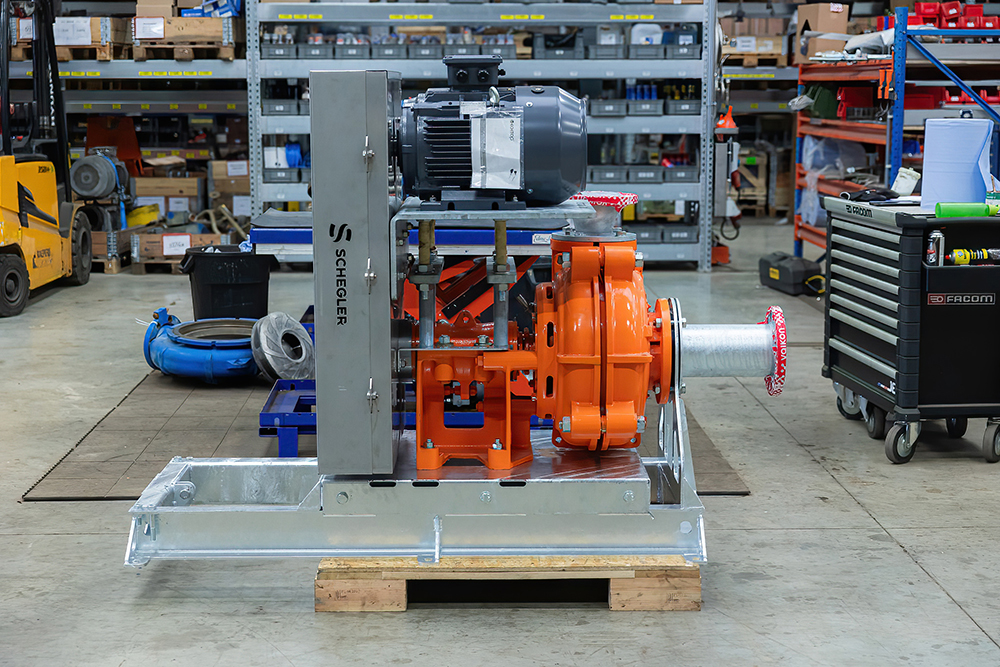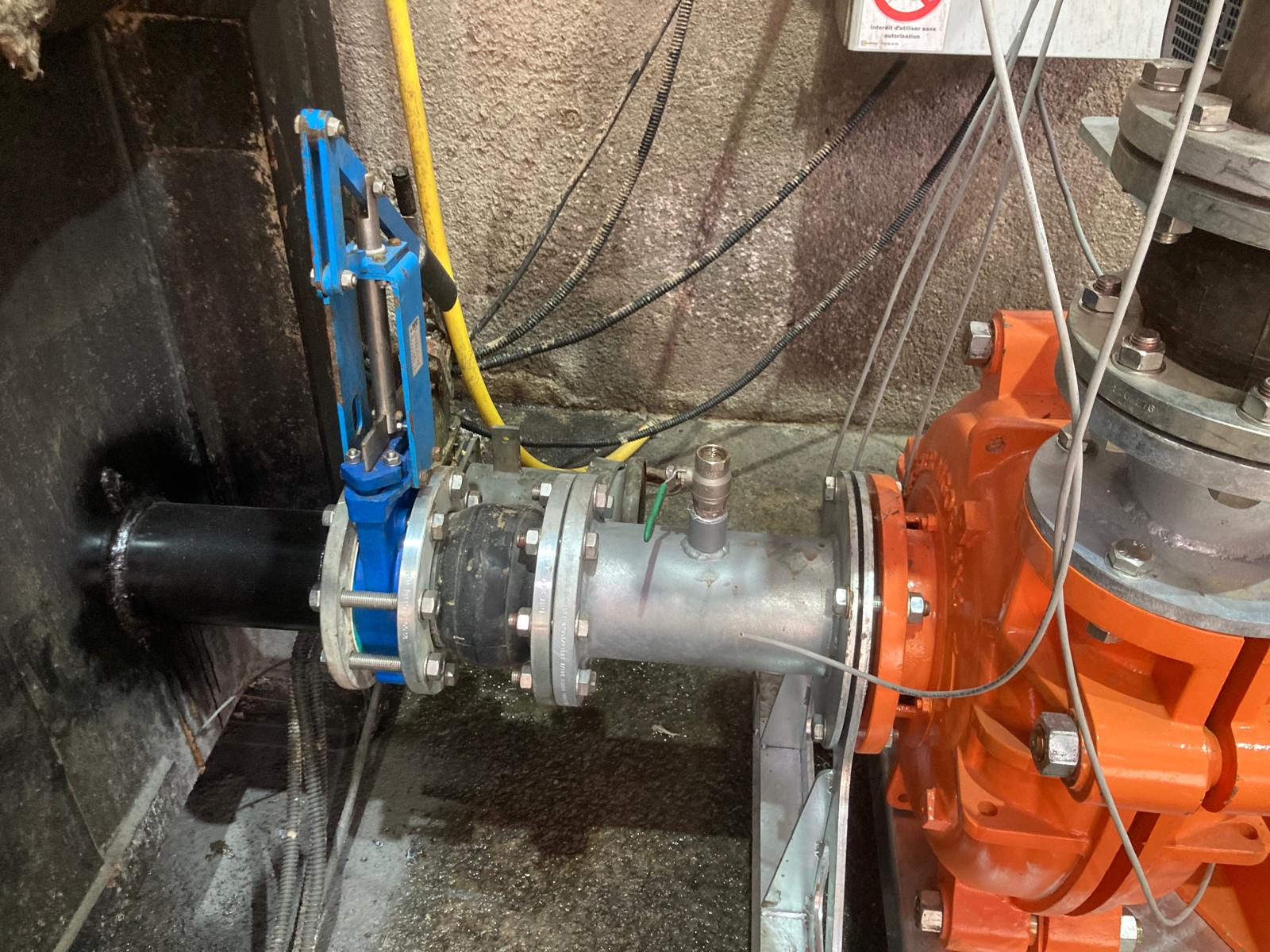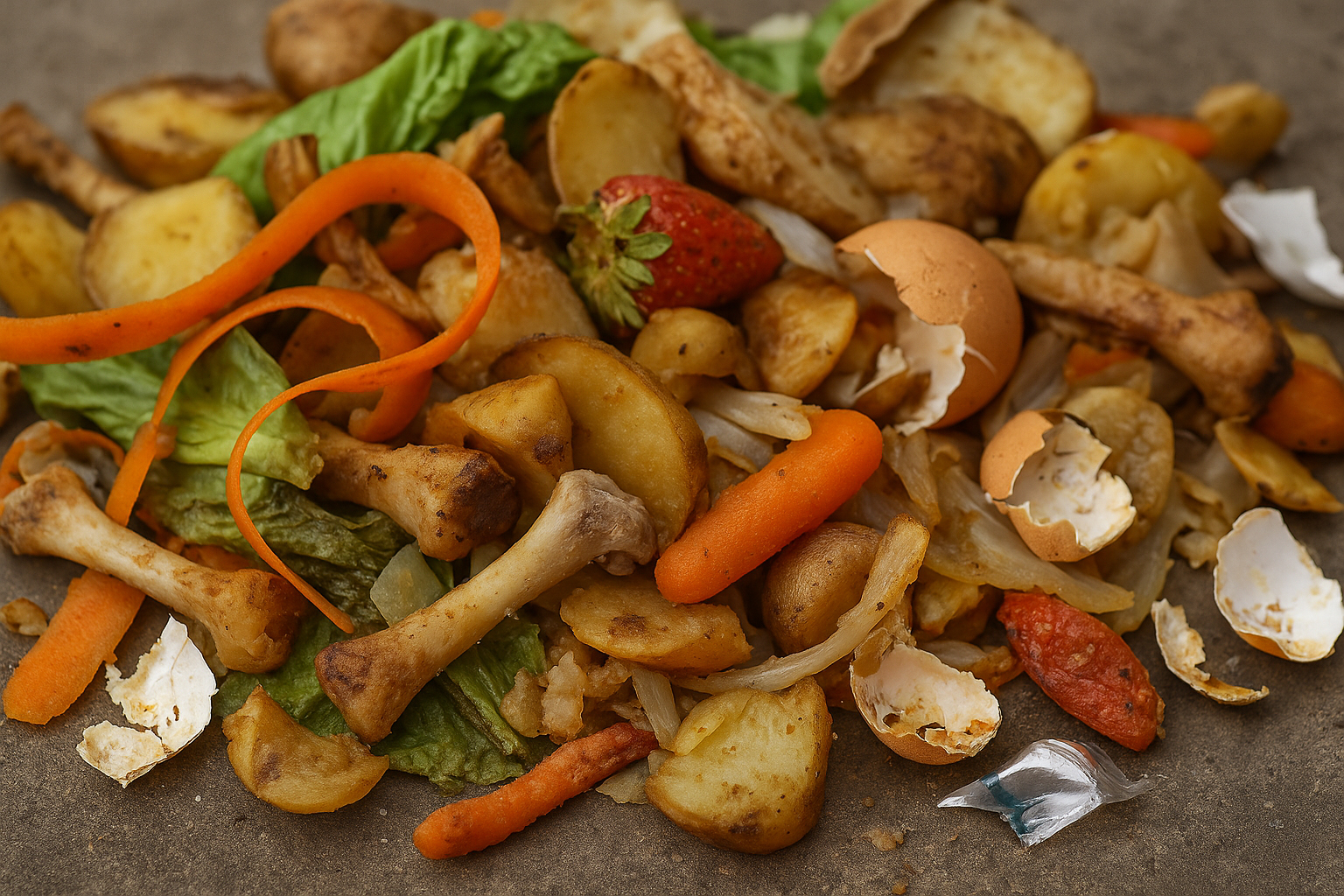Location
Belgium
Industry
Biogas
Reduced wear and tear
The low operating speed of 891 RPM minimizes wear on internal components. This results in fewer repairs and a much longer lifespan for the pump.
Wide passage for tough solids
The 63 mm free passage handles fibrous and chunky material with ease. It reduces the risk of clogging and supports stable operation.
Low energy consumption
Energy use remains under 11 kW. This reduces operating costs.
Service-friendly design
The pump is mounted on a sliding base, which makes maintenance quick and straightforward.
Parts availability
Vaikon stocks all critical wear parts locally. This ensures short lead times and minimal downtime when replacements are needed.
Challenge
The customer operated a biogas installation where swill – a waste stream consisting of kitchen and food residues – is used as feedstock for the digesters. This material typically contains hard and sharp contaminants such as bones, cutlery fragments or packaging remains. These cause accelerated wear in pumps.
Their Vogelsang VX186-130Q lobe pump required new lobes every three weeks. This led to high replacement costs, production downtime and frustrated maintenance crews.
Solution
We proposed a Schegler Vigor 6x4 centrifugal pump with a two-vane open impeller and a 63 mm free passage. The pump was installed on a sliding base and fitted with high-chrome wear components and an oversized bearing block for heavy-duty operation. The pump was commissioned under a no-cure, no-pay agreement and tested directly on the existing swill line.
What is swill?
Swill is a collective term for food and kitchen waste, often from restaurants, catering and food production. It typically contains a mix of organic matter (including fats, oils, starches and proteins), along with harder contaminants like bones, shells, or bits of packaging. This makes it an excellent substrate for biogas production, but also a tough challenge for pumps and separators. High dry matter content and unpredictable particle sizes can cause severe wear or clogging if equipment isn’t properly configured.

Result
After three months of continuous operation, the wet-end parts showed no measurable wear. There was no downtime, no emergency replacements, and no surprises. Power consumption was also lower than before. Measured energy use is around 10.7 kW, thanks to a lower operating speed (891 rpm).

